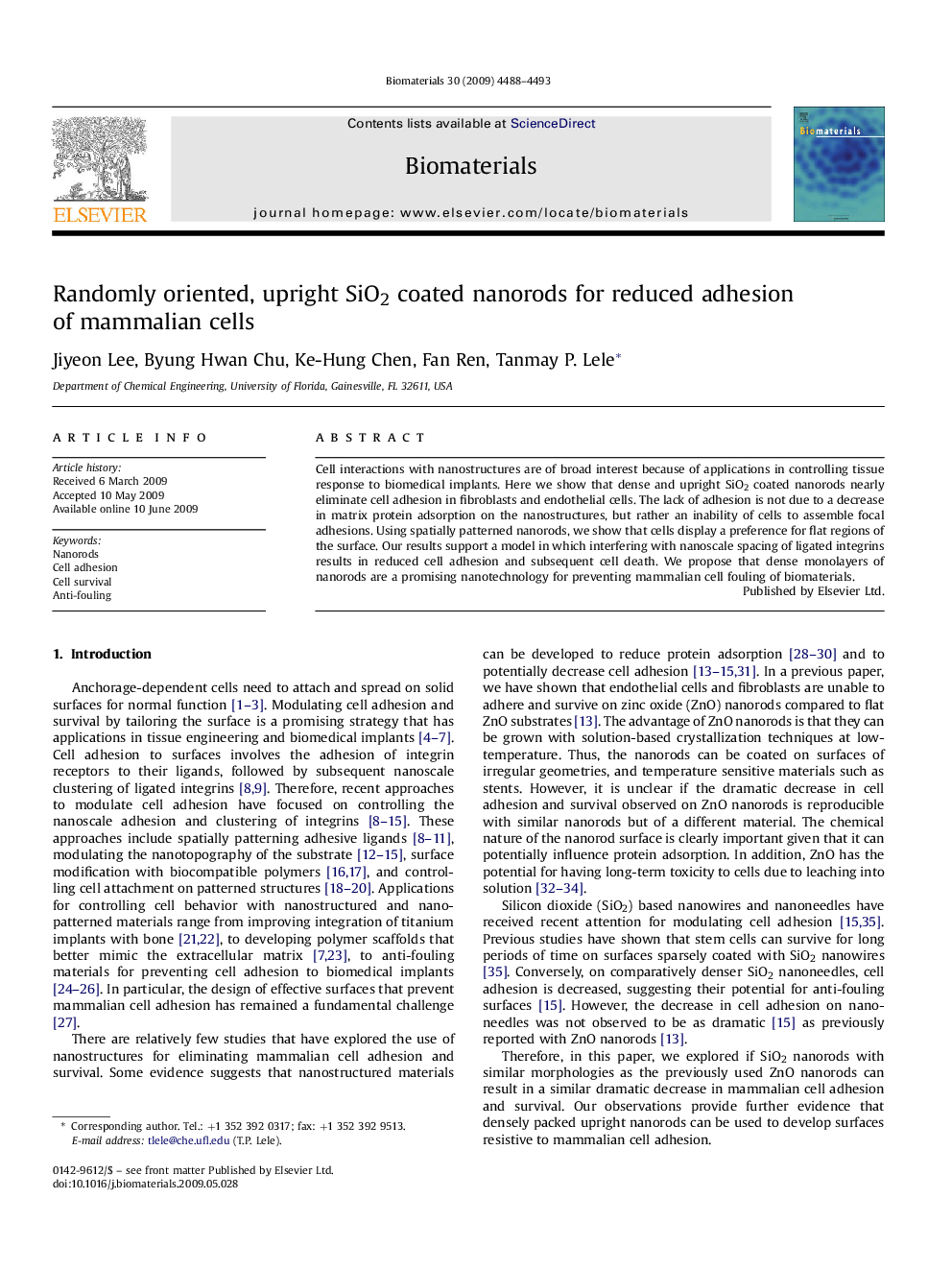| Article ID | Journal | Published Year | Pages | File Type |
|---|---|---|---|---|
| 10230051 | Biomaterials | 2009 | 6 Pages |
Abstract
Cell interactions with nanostructures are of broad interest because of applications in controlling tissue response to biomedical implants. Here we show that dense and upright SiO2 coated nanorods nearly eliminate cell adhesion in fibroblasts and endothelial cells. The lack of adhesion is not due to a decrease in matrix protein adsorption on the nanostructures, but rather an inability of cells to assemble focal adhesions. Using spatially patterned nanorods, we show that cells display a preference for flat regions of the surface. Our results support a model in which interfering with nanoscale spacing of ligated integrins results in reduced cell adhesion and subsequent cell death. We propose that dense monolayers of nanorods are a promising nanotechnology for preventing mammalian cell fouling of biomaterials.
Related Topics
Physical Sciences and Engineering
Chemical Engineering
Bioengineering
Authors
Jiyeon Lee, Byung Hwan Chu, Ke-Hung Chen, Fan Ren, Tanmay P. Lele,
